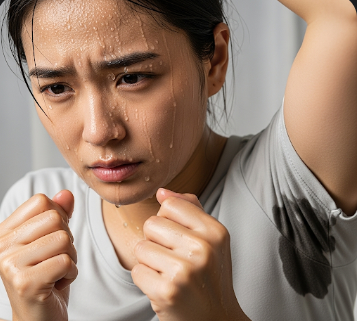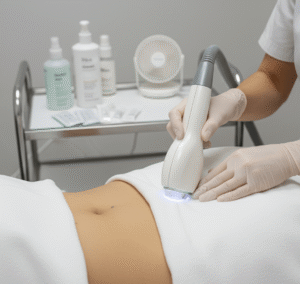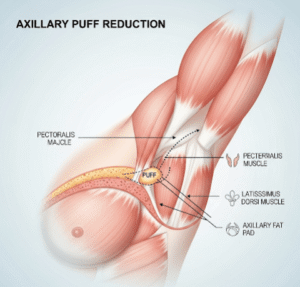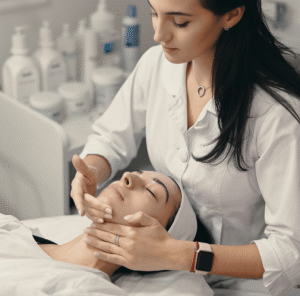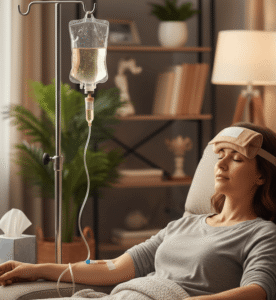Overview
Hyperhidrosis is a medical condition characterized by excessive sweating beyond what is needed to regulate body temperature. This condition can affect various parts of the body, including the hands, feet, underarms, face, and scalp, and may occur even in cool or relaxed conditions.
In South Korea, dermatology and specialized clinics provide advanced diagnostics, treatments, and management plans for hyperhidrosis, helping patients regain confidence and improve quality of life.
Key Facts
🟢 ➤ Hyperhidrosis is either primary (idiopathic) or secondary (caused by other medical conditions).
🟢 ➤ Affects approximately 1–3% of the population, often beginning in adolescence or early adulthood.
🟢 ➤ Can interfere with daily activities, work, social interactions, and emotional well-being.
🟢 ➤ Triggers may include heat, stress, anxiety, or may occur without any obvious stimulus.
🟢 ➤ Diagnostic tools include physical examination, sweat tests, and medical history review.
🟢 ➤ South Korean clinics offer a wide range of treatments, including topical therapy, oral medications, injections, and surgical options.
What is Hyperhidrosis?
Hyperhidrosis is excessive, uncontrolled sweating caused by overactive sweat glands.
Key points:
➤ Primary hyperhidrosis: Usually affects specific areas (palms, soles, underarms, face) and has no underlying medical cause.
➤ Secondary hyperhidrosis: Caused by medical conditions such as hyperthyroidism, diabetes, infections, menopause, or medications.
➤ Sweating is often symmetrical in primary cases and may interfere with daily tasks, like writing, holding objects, or social interactions.
➤ Emotional stress can trigger or exacerbate symptoms, though sweating may also occur at rest.
Symptoms Related to Hyperhidrosis
Symptoms depend on type and severity:
🟢 ➤ Excessive sweating localized to palms, feet, underarms, or face (primary).
🟢 ➤ Sweating may be widespread if secondary to medical conditions.
🟢 **➤ Skin may become moist, slippery, or prone to irritation and infections.
🟢 ➤ Social discomfort, embarrassment, and anxiety due to visible sweat.
🟢 ➤ Difficulty performing daily tasks like handling paper, tools, or electronic devices.
🟢 ➤ Secondary symptoms may include fatigue, weight loss, fever, or other signs of underlying disease.
Causes / Possible Causes
Hyperhidrosis can be primary (idiopathic) or secondary (due to other conditions):
Primary Causes (Idiopathic)
➤ Overactivity of sympathetic nerves controlling sweat glands.
➤ Genetic predisposition; often runs in families.
➤ Usually starts in childhood or adolescence.
Secondary Causes
➤ Endocrine disorders: hyperthyroidism, diabetes, menopause.
➤ Infections: tuberculosis or other systemic infections.
➤ Medications: antidepressants, antipyretics, or hormonal drugs.
➤ Neurological disorders: Parkinson’s disease, spinal cord injuries.
➤ Cancer: some tumors may trigger excessive sweating.
Other Contributing Factors
➤ Stress or anxiety exacerbating sweat production.
➤ High temperatures or humidity triggering episodes.
When Should I See a Doctor?
Consult a healthcare provider if:
🟢 ➤ Sweating is excessive, persistent, or affecting daily life.
🟢 ➤ Sweating occurs at night or during rest (suggestive of secondary hyperhidrosis).
🟢 ➤ There are additional symptoms such as fever, weight loss, or palpitations.
🟢 ➤ Over-the-counter treatments are ineffective, and quality of life is impacted.
Early evaluation helps differentiate primary vs secondary hyperhidrosis, identify underlying conditions, and select appropriate treatment.
Care and Treatment
Management of hyperhidrosis aims to reduce excessive sweating, improve comfort, and enhance quality of life:
Home and Lifestyle Measures
➤ Wear lightweight, breathable clothing.
➤ Use absorbent socks and moisture-wicking fabrics.
➤ Maintain good skin hygiene to prevent irritation or infection.
➤ Avoid triggers such as hot environments or spicy foods when possible.
Medical Treatments
➤ Topical antiperspirants containing aluminum chloride.
➤ Oral medications (anticholinergics) to reduce sweating.
➤ Botulinum toxin injections for localized areas like underarms, palms, or feet.
Surgical and Advanced Options
➤ Endoscopic thoracic sympathectomy (ETS) for severe, refractory cases.
➤ Minimally invasive procedures targeting overactive sweat glands.
Advanced Care in Korea
➤ South Korean dermatology and surgical centers provide precise diagnosis, botulinum therapy, laser sweat gland ablation, and ETS surgery.
➤ Multidisciplinary care involves dermatologists, neurologists, and surgeons.
➤ Patient education focuses on daily skin care, trigger management, and follow-up monitoring.
Highlights (Clean Green Arrow Version)
🟢 ➤ Hyperhidrosis is excessive sweating beyond normal physiological needs, often affecting hands, feet, underarms, or face.
🟢 ➤ Symptoms: visibly sweaty skin, social discomfort, difficulty with daily tasks, and risk of skin irritation.
🟢 ➤ Causes: primary (idiopathic, genetic, sympathetic overactivity) or secondary (thyroid disorders, medications, infections, neurological conditions).
🟢 ➤ Seek medical care if sweating is persistent, impacts daily life, or occurs with other systemic symptoms.
🟢 ➤ Treatments include topical antiperspirants, oral medications, botulinum injections, and advanced surgical procedures.
🟢 ➤ South Korea offers comprehensive care with dermatology and surgical specialists providing modern, personalized treatment and patient education.

